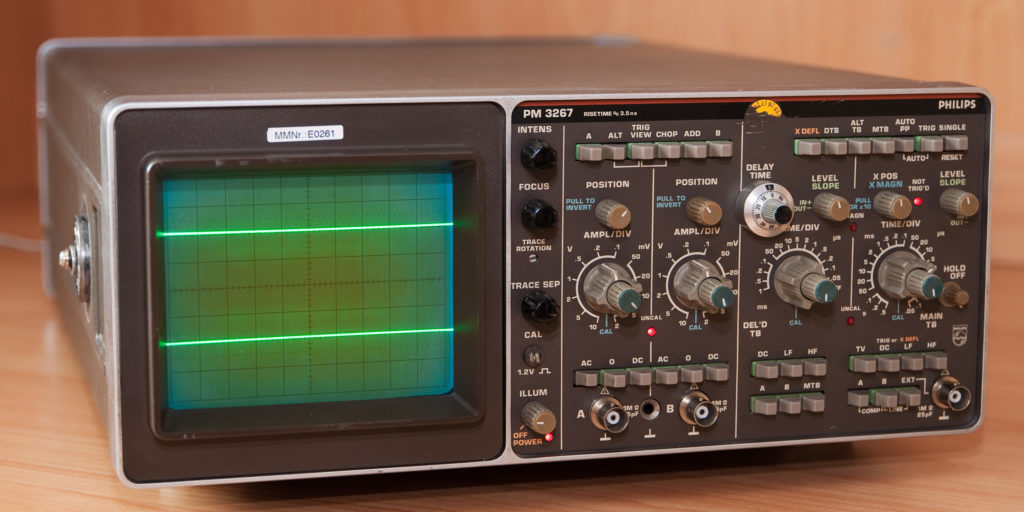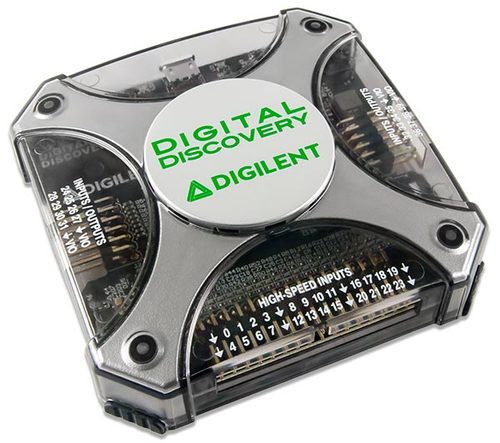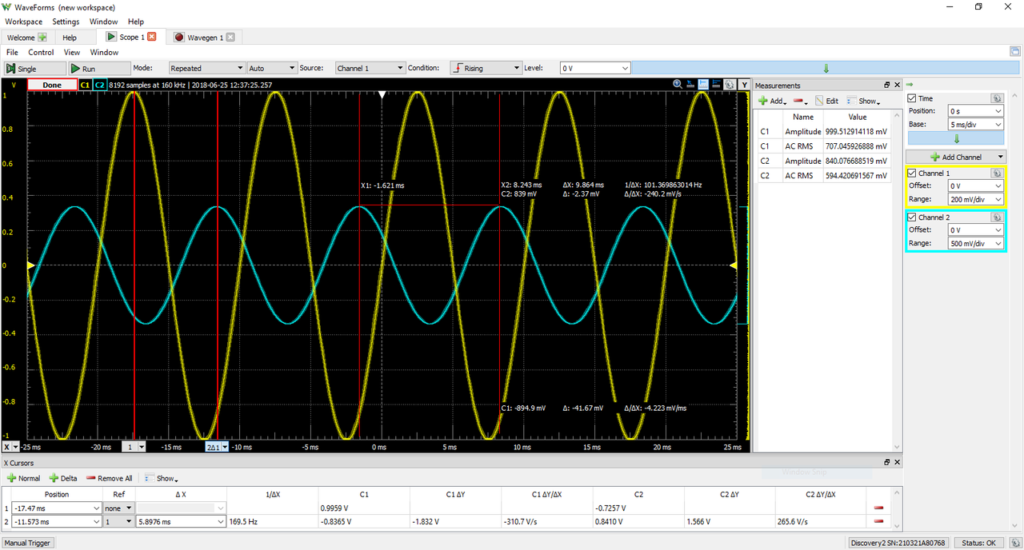Traditional benchtop oscilloscopes are a staple in engineering labs, featuring physical knobs at your fingertips, an awesome looking display. However, with the speed that FPGA and personal computer technology are advancing portable or USB Oscilloscopes are becoming widely used by professional engineers. While there are obvious reasons for having high-performance oscilloscopes, there are times where it’s more convenient or appropriate to reach for a USB or portable Oscilloscope like the Analog Discovery 2.

Cost and Size:
There’s a big difference in cost and size between a portable oscilloscope and a benchtop oscilloscope with the same specifications. Benchtop scopes are bulky and take up a significant amount of space. A USB Oscilloscope has the benefit of being small enough to fit in a pocket, providing the flexibility to be able to build/debug circuits at a computer desk where a benchtop scope might not fit, or be too expensive. While there are definitely times that call for heading to the company lab to use the benchtop scopes. But having to keep getting up to go to another area that might be in use or require special steps or permissions can take up time and interrupt concentration on the task at hand. With engineers constantly being asked to produce more, faster having an oscilloscope within arms reach is a huge advantage.

and scope leads to get the most out of your bandwidth.
Mixed-Signal Instruments and Programmability:
USB Oscilloscopes also often provide multiple instruments available with their software Waveforms: Impedance Analyzer, Logic Analyzer, Pattern Generator, and Power Supplies to name a few. Being software-based also allows for updates that add functionality and even new instruments, instruments that every engineer may not have access to in benchtop form. With these instruments being connected to a computer the processing power of the laptop or PC can be taken full advantage of, writing scripts or custom applications when running advanced, or long term testing. WaveForms Includes a script editor in JavaScript, SDK in C++, Python, and more as well as 3rd party support such as MATLAB and LabVIEW.

Portability:
In addition to the convenience of having a whole suite of mixed-signal test instruments at your desk, a USB scope easily fits in a backpack or briefcase allowing travel with powerful instruments. Whether meeting with a customer outside the office, debugging in the field, or working from home a portable scope can give an engineer the edge they need to solve problems faster. The Analog Discovery 2 and Digital Discovery are both about the size of the average adult palm and, easily storable, and both work with Waveforms software, which can run on Mac, Windows, and Linux.

there is an Analog Discovery 2 in his pocket. Photo from here.
Data Export and Sharing:
In the age of skype and messaging, it’s no longer necessary for teams to be in the same office, or even in the same country. However, this can make it difficult to collaborate and share engineering problems and designs. With an oscilloscope connected to your computer, data and screenshots can easily be exported to a computer and shared amongst the team. Providing collaboration and demonstration possibilities that wouldn’t be as feasible with a benchtop scope.

This doesn’t mean that high-performance benchtop scopes are overkill or should be disregarded. Just simply there are situations where a portable, USB powered scope and/or logic analyzer like the Analog Discovery 2 and the Digital Discovery are better suited, that it’s worth the investment. Happy scoping!


I love my Analog Discovery’s, both the original and the AD2. The portability, combined with the wide range of tools, both analog and digital, make it a great investment. I recently purchased a Siglent SDS 1104X-E, a great scope for the hobbyist, but I would not think of letting my AD’s go. I would say though, that to be fair, you could have used a more current scope in your picture than the PM3267. As a size comparison, something like my Siglent would be more realistic on a current bench.
I also want to thank Attila for all of the prompt and knowledgeable help he has supplied on the Digilent forum. Dave
I just returned to San Diego after a 3 week compressed semester equivalent Electrical Circuits course with lab component held in London. We completed 12 lab experiments using Digilent Power Modules, Analog Discovery 2, inexpensive DMM, breadboard, and passive components.
It was a huge success.
Very early in the Fall semester, the London class will meet over a weekend to familiarize themselves with bench top equipment at our home at the University of San Diego.
Use of portable USB based equipment was simple and provided the same information as benchtop equipment.
I’m sold!